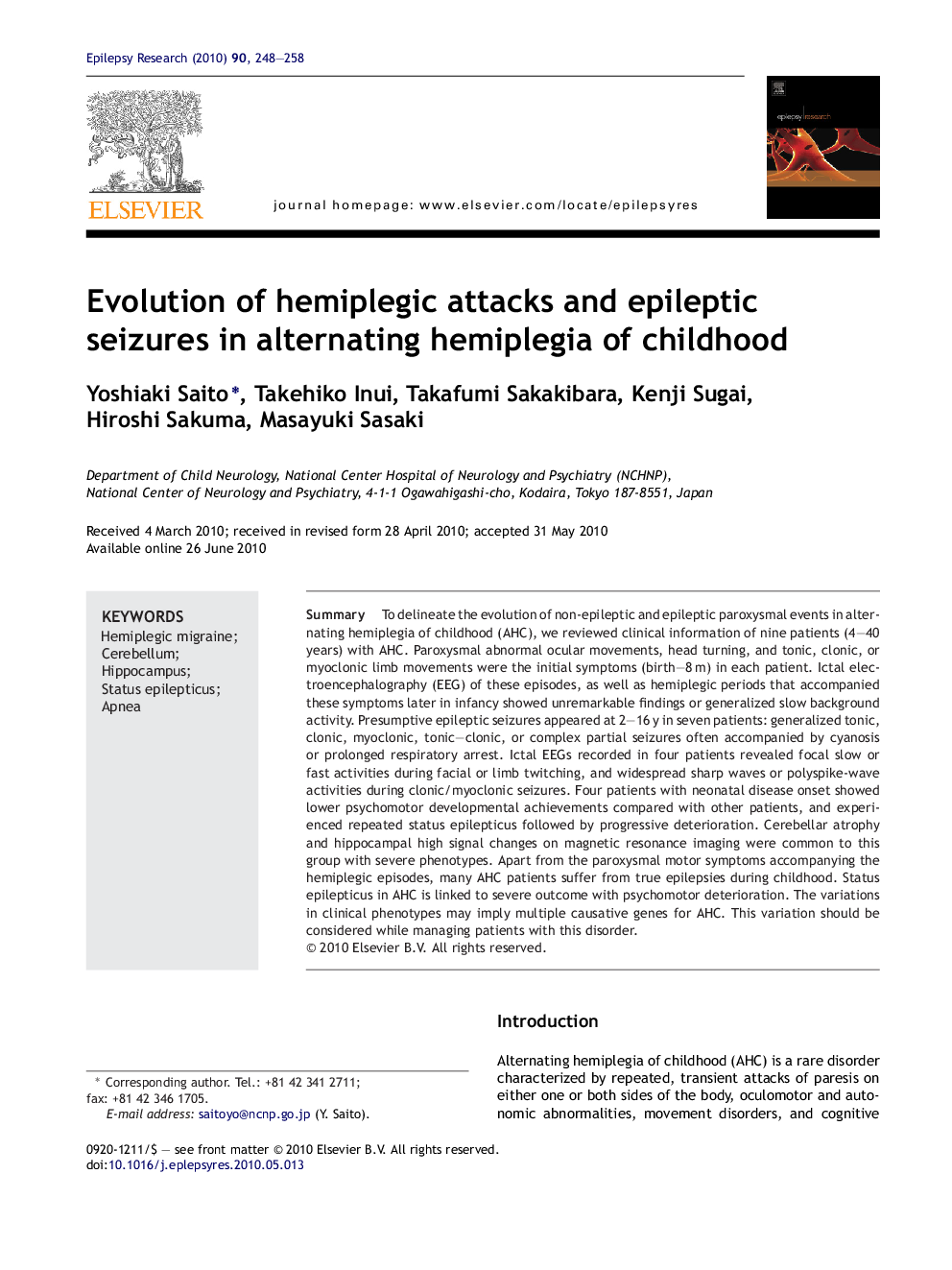| Article ID | Journal | Published Year | Pages | File Type |
|---|---|---|---|---|
| 3052557 | Epilepsy Research | 2010 | 11 Pages |
SummaryTo delineate the evolution of non-epileptic and epileptic paroxysmal events in alternating hemiplegia of childhood (AHC), we reviewed clinical information of nine patients (4–40 years) with AHC. Paroxysmal abnormal ocular movements, head turning, and tonic, clonic, or myoclonic limb movements were the initial symptoms (birth–8 m) in each patient. Ictal electroencephalography (EEG) of these episodes, as well as hemiplegic periods that accompanied these symptoms later in infancy showed unremarkable findings or generalized slow background activity. Presumptive epileptic seizures appeared at 2–16 y in seven patients: generalized tonic, clonic, myoclonic, tonic–clonic, or complex partial seizures often accompanied by cyanosis or prolonged respiratory arrest. Ictal EEGs recorded in four patients revealed focal slow or fast activities during facial or limb twitching, and widespread sharp waves or polyspike-wave activities during clonic/myoclonic seizures. Four patients with neonatal disease onset showed lower psychomotor developmental achievements compared with other patients, and experienced repeated status epilepticus followed by progressive deterioration. Cerebellar atrophy and hippocampal high signal changes on magnetic resonance imaging were common to this group with severe phenotypes. Apart from the paroxysmal motor symptoms accompanying the hemiplegic episodes, many AHC patients suffer from true epilepsies during childhood. Status epilepticus in AHC is linked to severe outcome with psychomotor deterioration. The variations in clinical phenotypes may imply multiple causative genes for AHC. This variation should be considered while managing patients with this disorder.
